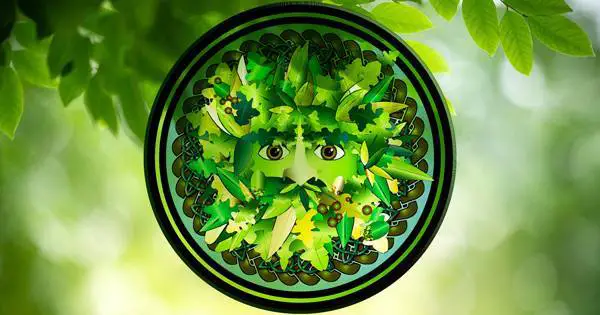The Green Man is represented in many cultures throughout the world as a head made of foliage. He is also known as the ‘Man in the Tree’, ‘Derg Corra, Viridios’ and ‘Jack o’ the Green’.
He relates to Celtic culture and can still be seen today on architecture around Ireland and Britain, usually on religious buildings.
A symbol of rebirth
The Green Man represents the lushness of flourishing vegetation and the coming of spring and summer and is a symbol of rebirth and possibly the co-dependence between nature and man.
He appears as many characters in different mythologies. Since plants and vegetation are vital to life on earth, it makes sense that nearly every culture would have a deity devoted to it.
In Celtic mythology he could be related to both Cernunnos, the horned god and Viridios the male god of verdure.
Some historians believe that the human head was of particular importance to the Celts as it was container of the soul. In fact the Celts were known for taking heads as trophies in battle and heads appear frequently in Celtic art.
Vegetation is significant in Celtic culture
Celtic and Druid culture also revolves around trees and vegetation, so a symbol representing a head of foliage would have been particularly significant to the ancient Celts even if its origins lie elsewhere.
In modern times The Green Man is associated with environmental issues and has been used as a logo for environmentally-conscious, sustainable businesses such as eco-homes, landscaping and renewable energy.
There are also several music and nature festivals named after The Green Man, which combine music, art and folklore with the improvement of the environment.
